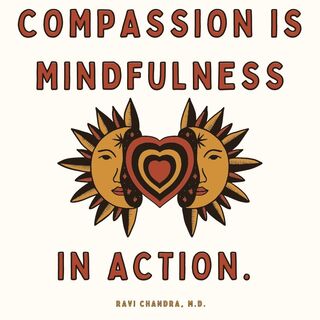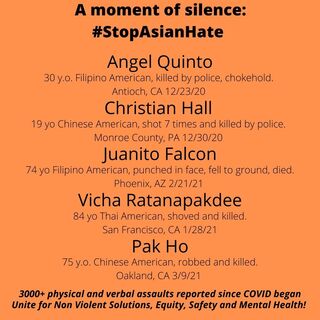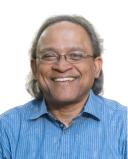Bias
Analyzing the Recent Surge in Anti-Asian American Violence
What are some possible causes of violence against Asian Americans?
Posted February 28, 2021 Reviewed by Ekua Hagan

This is an extraordinarily difficult and overwhelming time for Asian Americans — a time of awakening for some, confirmation of painful reality for others, and an opportunity to deepen relationship and stand in solidarity for many, including me. This post attempts to address several issues, perhaps imperfectly:
- The pervasive anti-Blackness in the broader culture that has victimized Black peoples by design since 1619.
- The anti-Asian hate that is ingrained and is a matter of historical record in the dominant culture and that has been kindled to a blaze in the last year. Racism, the Model Minority Myth, the sense of being a perpetual foreigner and perceived weakness/silence/vulnerability and perceived buying into the White/Black racial hierarchy in pursuit of Whiteness are interwoven to challenge and frustrate Asian Americans' sense of identity, belonging (vs. "fitting in") and wellness.
- The poverty and inequity that drive violence.
- The fearful possibility for a repetition of the conditions that sparked the murder of Latasha Harlins and then the LA riots/uprising in 1992.
- The myths that have driven our division, and an attempt to articulate a place of mutuality, support, and communal growth by commitment to solidarity. These myths in the dominant culture include White Supremacy, individualism, and the myth of the hero/warrior/savior which all base themselves on power and hierarchy as opposed to relationship and belonging.

There has been a dramatic upsurge in violence against Asian Americans over the last year, especially notable in the last month since 84-year-old San Francisco resident Vicha Ratanapakdee was pushed to the ground and killed. Violent and deadly attacks on elders in San Francisco, Oakland, New York, and elsewhere have many Asian Americans living in fear, taking action, and speaking out. Community elder escort patrols have enrolled hundreds of volunteers, rallies have brought out hundreds of supporters, celebrities have offered tens of thousands of dollars in rewards for the identification of perpetrators, President Biden’s White House has issued a memorandum condemning racism, xenophobia, and intolerance against Asian Americans, and many articles have been written (see references below).
As a psychiatrist and a community member, I worry that the situation could get much worse unless there is increased focus on these issues and appropriate remedies. The focus and remedies should absolutely not pit marginalized groups against each other, or simply call for aggressive and misguided policing tactics, but focus on the deeper causes of violence.
What are some causes for anti-Asian American violence?
Racism, the Model Minority Myth, and the Myth of the Perpetual Foreigner
Asians are clearly identifiable. East Asians have been singled out, blamed, and scapegoated for the pandemic since President Trump and others called COVID-19 the “China Virus.” Even Jeremy Lin was recently called “coronavirus” on an NBA court, and has experienced racist taunts throughout his basketball career. COVID-related stress has increased as the pandemic goes into its second year. Racism and racial justice issues and COVID have been called "twin pandemics," or even the Syndemic, as issues of health, racism and poverty are interwoven.
Asian Americans are tagged with the Model Minority Myth, which presumes that they are somehow “better” minorities who bootstrap their way to financial success and don’t complain about racism or injustice. The Model Minority Myth has been used as a cudgel against other minority groups, particularly Blacks, who have obviously inherited a horrendous history including slavery. (We must all be aware of this common inheritance and transhistorical trauma as Americans and world citizens.) But Black peoples have been described as living in a sea of extreme poverty and discrimination while staring at an island of wealth and prosperity that doesn’t understand or care about their lives, and further scapegoats them as perpetually “bad” or “undesirable.” One might understand the resentment and aggression felt by some young (and in the cases I’ve read about, mentally disturbed) Black men towards Asians—whom they might falsely presume to be a threat to their human dignity and survival because of perceived economic success and perceived silence on racial issues.
Another racist myth is a sense of Asians as perpetual foreigners, and thus never part of America, who yet get valorized in the cultural imagination on one hand, and yet have their full identities made invisible and erased.
Moreover, envy, resentment, and hostility are frequent emotional by-products of a super-capitalistic and highly inequitable society. Since many (but not all) of the attacks have allegedly been committed by young Black men (Update: a report issued 6/7/2021 verifies that most attacks have been committed by Whites), we have to understand how racial and economic inequity fuels antagonism between our communities. Otherwise, we risk inflaming anti-Black racism in the response to these attacks. Some poor White and Black people sometimes see Asian Americans and other immigrants as "jumping the line," and achieving success that has thus far been denied them. This ignores the full and complex reality of Asian American history since 1587 and the complexity and diversity of present stories, including great disparities in income within and between Asian American ethnic groups, particular but not exclusive to Native Hawaiian/Pacific Islanders and Southeast Asians. These attitudes trivialize Asian American suffering, and Asian Americans are understandably frustrated when they are marginalized by other anguished and distressed ethnic groups. A new Asian American immigrant, unschooled in the deep scars of Black, Indigenous and Latinx communities might understandably say "why are you dragging me into this?"
And as Rodney King said, in what must stand as the epitaph of the 20th century: "Can't we all just get along? Can we stop making it horrible for the older people and the kids?" Mr. King and the newest immigrant might agree deeply that the path forward is nonviolence, understanding and compassion. I hope more people are listening. If we all get dragged to our pain points, it can be difficult or impossible to heal.
But violence is also an outgrowth of intersecting lives. Poorer Asian and Black peoples live on the same streets in San Francisco, Oakland, and New York. This can foster connection or disconnection, as those 1992 events in Los Angeles indicate. Anti-Blackness in the Asian community can come out in attitudes and actions. As various tensions in our interpersonal and psychological environment increase, it's all too easy for anti-Black attitudes and defensiveness to manifest in reactivity to perceived conflict, as was the case when Latasha Harlins was killed by a Korean American shopkeeper in 1991. The PBS Asian Americans documentary (still streaming for free, linked in my review) makes it clear that there has been a lot of solidarity between Black and Asian peoples over our shared history in America, but also conflicts that need to be actively understood and addressed. The Asian Americans documentary also makes it clear that Asians have been targeted by violence from White America throughout their history. Many have fled violence to come to America as well.
My only life as an immigrant in America would not have been possible without the sponsorship and friendship of Black doctors, who gave my mother a visa and an opportunity to train alongside them. The Civil Rights movement made possible the Immigration Act of 1965, as well. Two-thirds of Asian Americans are immigrants and children of immigrants. (See my recent article highlighting my multicultural childhood in Nashville, Tennessee in the mid-1970s.)

We live embedded in a web of intersecting trauma. Author Junot Díaz calls the outcome the "ghostcolonial" or conflict mind, the ghost of colonialism, slavery, subordination and divide and conquer tactics, which pits us against each other and all too often makes Black people and Blackness the bad objects of the power structure. As I've said before, the bad object of the power structure we create should be inequity, not a person, a people, a nation, or a civilization. And the creation of culture and civilization is a dynamic process that requires mutual effort.
Poverty
A U.K. study in Denmark revealed that individuals “from families who remained in the least affluent fifth of society were seven times more likely to harm themselves and 13 times more likely to commit violent crime as young adults.” The researchers said, “exposure to poverty can have an adverse impact on early child development as well as parental conflict and separation, harming children’s psychosocial development and well-being.”
Much crime happens between impoverished people. Asians living in impoverished areas are at more risk.
We cannot address violence without demanding equity.
Vulnerability
The STOP AAPI Hate program recorded over 3000 verbal and physical assaults against Asians since the beginning of the pandemic. Asian women and Asians over 60 years of age have been disproportionately impacted. Clearly, those who are perceived to be “weaker” make easier targets to those who wish to exert aggressive “dominance.” Also, there is a perception that Asians will not report crimes, and thus perpetrators of violence can get away with the crime.
Violence is a product of a society that values wealth, power and status over compassion and common humanity.
The Disconnection of Individualism and Other False American Myths

Disconnection is at the root of all suffering. The opposite of suffering is belonging. Violence against Asians (and violence in general) is a symptom of society’s dysfunction and disconnection. This disconnection is the product of the system working as designed. America’s founding myths contribute to disconnection, alienation and ultimately, violence.
One of those myths is individualism. An individualistic society may have some strengths, but it also fosters antagonism, competition, inequity and narcissism. Violence is the ultimate narcissistic, or actually sociopathic, act. We have to balance individualism with the needs of society as a whole, including all its members.
Connected to this is the masculine hero/warrior/savior myth. This has centered society on the success of White men, devaluing all others and promoting aggression towards perceived ‘enemies’ or ‘subordinates.’ I believe we have to deconstruct this myth and its effects, and embrace the journey of relationship and belonging, rather than victory over others. (See article in references about the healing journey of the feminine.)
We may go faster alone, but we go farther together. The individualistic myth, mirage, and delusion is facing the reality of interdependence. I can only hope we see reality in time to save lives.
Violence is the most aggressive form of contact and connection between individuals and communities, and fills in a gap of disconnection and alienation. When belonging, understanding, empathy and compassion fill the space instead, there will be no more room for violence.
(c) 2021 Ravi Chandra, M.D., D.F.A.P.A.
PBS NewsHour: "Hate is learned: tracing the history of anti-Asian violence in America" (April 4, 2021)
You may also like the lectures below. (Also see lectures on Asian American psychology from this 2019 series).
SF Love Dojo Narcissism and Executive Power in the American Psyche, Part 1.
SF Love Dojo: Narcissism and Relatedness in the American Psyche, Part 2.
References
A Tense Lunar New Year for the Bay Area After Attacks on Asian-Americans - The New York Times, Feb 12, 2021
Anti-Asian attacks: Chinatown patrols, guns and racial strife - The Washington Post, Feb 25, 2021
Attacks on Asian-Americans in New York Stoke Fear, Anxiety and Anger - The New York Times, Feb 26, 2021
Asian-American Violence Plagues Xi’an Famous Foods During Covid - The New York Times, Feb 25, 2021
Chinatown stabbing: Suspect never saw victim's face, law enforcement official tells ABC News - ABC7 New York, Feb 27, 2021
Peninsula teen’s rally against anti-Asian American hate crimes draws hundreds - East Bay Times, Feb 27, 2021
The Politics of Blaming China: Asian Americans Will Suffer, Ravi Chandra in Psychology Today, April 19, 2020
Asian Americans in San Francisco are dying at alarming rates from COVID-19: Racism is to blame. USA Today, Oct. 18, 2020
Attempted sexual assault on Asian woman at SJ Caltrain station a possible hate crime KTVU, March 10, 2021
UPDATE: Suspect Arrested In Oakland Robbery, Assault That Left 75-Year-Old Asian Man Brain Dead, KPIX, March 9, 2021
Bay Area College Students Speak Out About Experiencing Anti-Asian Racism, KPIX, March 8, 2021
Wun C. Ignoring The History Of Anti-Asian Racism Is Another Form Of Violence. Elle, March 2, 2021
Kwon S. This Is What No One Tells You About Being Asian In America In 2021. Huffpost, February 18, 2021
Chung N. My Son Is Bullying His Asian Classmate About the Pandemic. Slate, March 3, 2021
Rothman J, Feinberg S. An American Dream, Tarnished. New York Times, February 25, 2021
Asian American mother says she was spit at while holding baby, called 'Chinese virus', ABC7 News, March 11, 2021
Memoirs of a Superfan Volume 15.3: Rejecting Donald Trump’s Racist Visions!, East Wind eZine, September 7, 2020
Hawkins D. An 83-year-old Asian American woman was spit on and punched so hard she blacked out, police say. Washington Post, March 13, 2021
Demsas J, Ramirez R. The history of tensions — and solidarity — between Black and Asian American communities, explained. Vox, March 16, 2021




